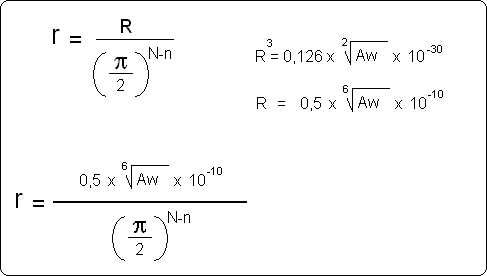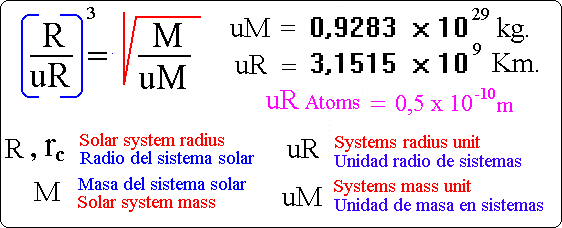
Configuration, situation and distribution of electrons in atoms.
( In the anterior page we can see Orbits of Energy )
The first formula is simplified and here ( R ) is the atom radius, and off course, the radius ( r ) of the last electron.
Laterally we can see the formula for the radius atom ( R ), which is exposed and explained in the following page.
An finally we can see the total formula including the ( R ) pamareters.
In these formulas ( Aw ) is the atomic weight, ( N ) is the number of electrons that this atom has; ( n ) is the situtation number of the electron that we have measuring.
Distances are measure in metres.
An importante question to keep in mind is that electrons make about 10^14 laps per second and this way we can't know in what lap position is in any moment because this electron occupies during a second all the positions many times, (10^14 times).
Against the radius we can know it by mean of these formulas.
On the other hand, rotation of electrons like planets are not in contradiction with any physical law because:
1.- The magnetic fields that any nucleus produce around it are those that attract and mantain electrons in their orbits.
2.- Later on, the gravity fields are those that give electrons their adequate velocity to get the accurate balance.


An importante question to take in mind is that "so much in electrons as in planets the obtained distances by mean of these formulas are always middling distances, due to this theory is against the quantum number". So between an atom or star and another one always some size difference existe. Including between the same type of atoms.
At the same time orbital ones ( electron, plenets ) have harmonic oscilation (maximum and miminum) inside their orbits.
AS we can deduce from these formulas, when stars have many planets, the nearest can be absorbed into solar nuclei.
The same occur in atoms, where the interior electrons also can be absorbed into nuclei.
Surely atoms and stars don't pass of 30 orbitals.